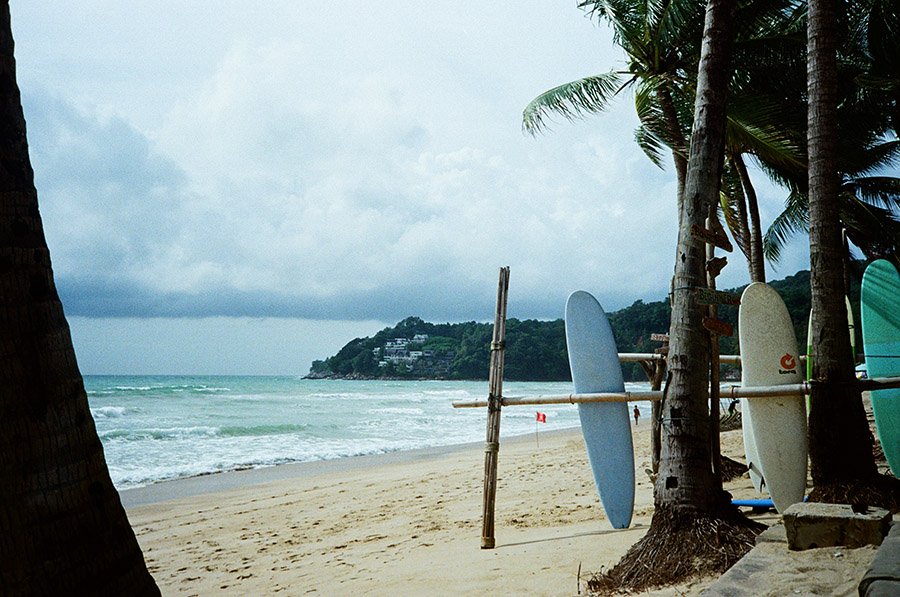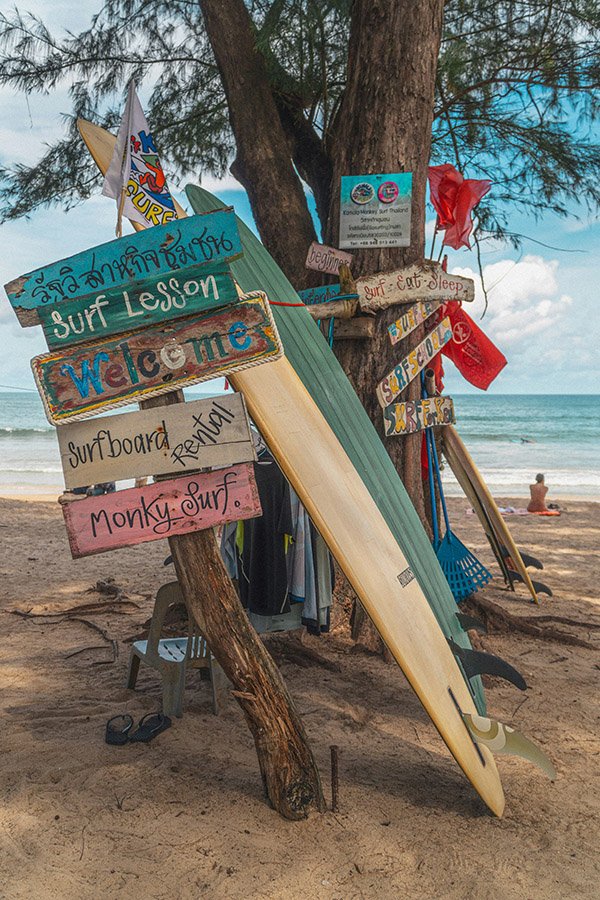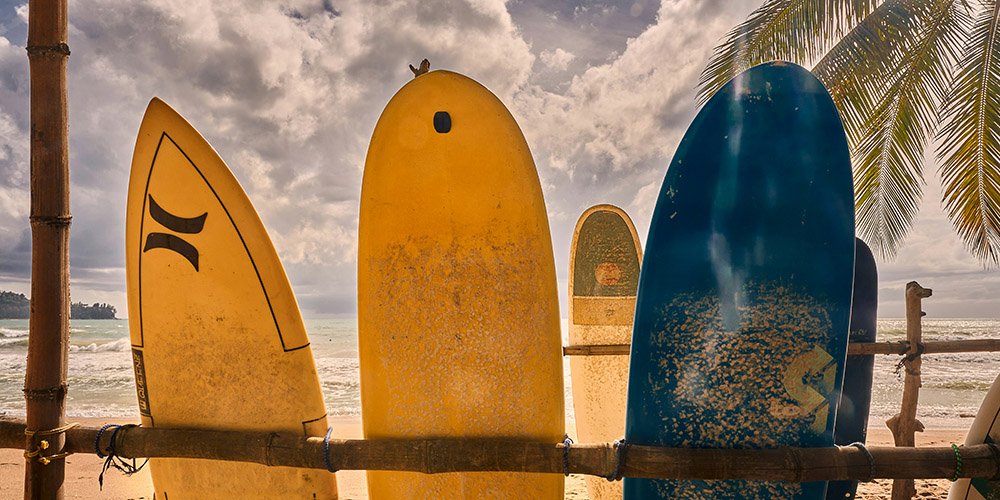Surfing in Thailand: When, Where and How to Get Started
Thailand, renowned for its breathtaking beaches, warm tropical climate, and vibrant culture, has steadily gained popularity among surfers. While not traditionally known for its big waves like Hawaii or Bali, Thailand offers a fun and increasingly recognized surfing scene, particularly suited to beginners and intermediate surfers.
From the Andaman Coast to the Gulf of Thailand, there are plenty of beaches where you can catch a wave, especially during the surf season. Let’s explore the best places, times, and tips for surfing in Thailand.
Best Time to Surf in Thailand
Thailand’s surf season is heavily influenced by the country’s two distinct monsoons, which bring different surfing conditions.
Southwest Monsoon (May to October)
The primary surf season in Thailand occurs during the southwest monsoon, which lasts from May to October. During this time, strong winds from the southwest generate consistent swells, especially along the Andaman Sea coast. Waves can reach heights of 2-3 meters (6-9 feet), and the conditions are ideal for surfing.
The monsoon season is also a low-tourist period, meaning the beaches are less crowded, and accommodations are cheaper. While there’s occasional rain, it usually comes in short bursts, leaving plenty of time to enjoy sunny skies and warm waves.
Northeast Monsoon (November to February)
During the northeast monsoon, which affects the Gulf of Thailand, the conditions are different. This period, from November to February, brings smaller waves suitable for beginner surfers on beaches like Chaweng Beach in Koh Samui and Hua Hin. While the surf is less powerful, these are perfect spots for those looking to try surfing in calmer waters.
Also read: Body Surfing: The Ultimate Beginner’s Guide

Top Surf Spots in Thailand
While Thailand may not offer the towering barrels of Hawaii or Indonesia, it boasts an array of surf spots that cater to all skill levels.
Phuket: Thailand’s Surfing Hub
Phuket, Thailand’s largest island, is the epicenter of the country’s surfing culture. It’s home to some of the best-known surf spots, particularly along its western beaches:
- Kata Beach: As the birthplace of Thailand’s surf scene, Kata Beach remains the most popular spot for surfing in Phuket. Its waves, which can reach heights of up to 2 meters (6 feet), are perfect for both beginners and more experienced surfers. There are plenty of surf schools and board rentals available right on the sand.
- Surin Beach: Known for its stronger, heavier waves, Surin Beach is ideal for more advanced surfers. The beach break here can be challenging, making it a popular spot for those seeking more adrenaline-pumping waves.
- Kamala Beach: For those looking for a more relaxed surf session, Kamala Beach offers gentle waves perfect for longboarding. The calmer conditions make it a great spot for intermediate surfers.
Khao Lak: An Underrated Gem
Located about 60 kilometers north of Phuket, Khao Lak offers a quieter and more laid-back surf experience. Its 25-kilometer coastline features a mix of beach and reef breaks, catering to all levels of surfers. The surf season here coincides with the southwest monsoon, from May to October.
Koh Lanta: For the Casual Surfer
While not as famous as Phuket or Khao Lak, Klong Dao Beach on Koh Lanta is a hidden gem for surfing. With mellow right- and left-handers, this spot is best for beginners and intermediate surfers looking for a more tranquil setting.
Koh Samui: Best During the Northeast Monsoon
On the opposite side of the country, Chaweng Beach on Koh Samui offers some of the Gulf of Thailand’s best surf during the northeast monsoon from November to February. The waves here are perfect for longboarding, and the beach’s laid-back vibe is ideal for a relaxed surf session.
Surfing Conditions and Challenges
Thailand’s surfing conditions vary greatly depending on the season and location. The waves here are generally smaller and less consistent than in traditional surfing hotspots, but that’s part of the charm, especially for those new to the sport. The waves are generated mostly by local winds rather than big ocean swells, so they tend to be less powerful.
A significant advantage of surfing in Thailand is the relatively safe environment. Most surf spots have sandy sea-beds, reducing the risk of injury compared to destinations with coral reefs or rocky sea floors. Additionally, Thailand’s warm waters mean you can surf comfortably without a wetsuit year-round.
Also read: Is Surfing Hard? Here’s The Truth

Surf Schools and Rentals
One of the great things about surfing in Thailand is the accessibility of surf schools and rental shops, particularly in Phuket.
- Kata Beach and Kamala Beach: Both beaches are lined with surf schools offering lessons for all levels. Board rentals are affordable, with prices typically around THB 500 per day for surfboards, and lessons starting at THB 800 per hour.
- Longboarding in Phuket: Longboarding is particularly popular in Phuket due to the mellow, rolling waves at beaches like Kamala and Surin. If you’re just getting started, longboards are easier to ride and more stable.
Surfing Competitions and Events
Surfing in Thailand isn’t just about casual rides; the country is also home to several surf competitions. These events are a great way to see the local surf community in action and even participate if you’re up for the challenge.
- Phuket Surfing Festival: Held annually at Kata Beach, this festival attracts both local and international surfers. It’s a great time to experience the Thai surf culture and enjoy the festive atmosphere on the beach.
- Khao Lak Surf Contest: This competition, held in October, showcases the best of Khao Lak’s surf scene. It’s a fun event for both spectators and competitors.
Why Surfing in Thailand?
So, why surf in Thailand? For one, it’s a chance to experience the country’s stunning beaches without the crowds you’d find in more popular tourist destinations. Thailand’s surf spots are less crowded than places like Bali, making it easier to find space in the lineup.
Additionally, the relatively gentle waves are perfect for beginners or those looking to improve their skills. Thailand also offers affordable surf lessons and rentals, making it accessible to travelers on a budget.
Final Thoughts
Surfing in Thailand is more than just riding waves; it’s about experiencing the country’s laid-back beach culture, warm tropical waters, and welcoming surf community. Whether you’re a beginner looking to catch your first wave or an experienced surfer seeking uncrowded spots, Thailand offers something for everyone. So grab a board, hit the beach, and enjoy the surf in this tropical paradise!





